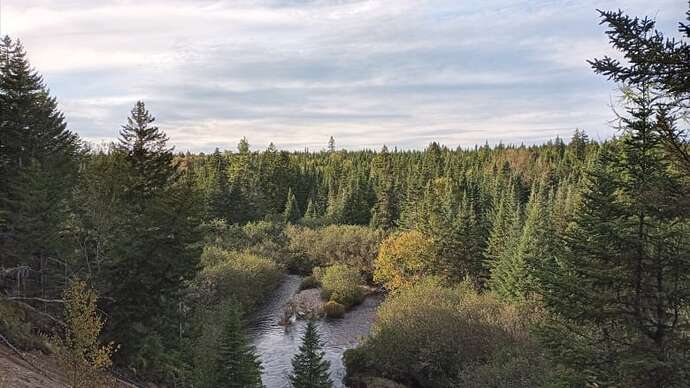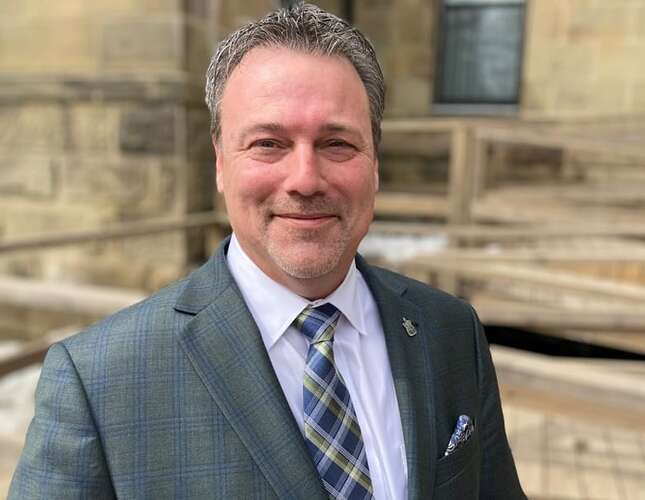New Brunswick goes quiet on whether forest companies really face $50M royalty hike
Minister mum on whether major increase announced in July is as large as first claimed

Robert Jones · CBC News · Posted: Sep 28, 2022 9:00 AM AT
New Brunswick applies 20 different royalty rates to trees cut on Crown land, down from 38 last year. In July the province said it expects to earn an additional $50 million from rate increases but won’t confirm that is still what is expected. (Submitted by Ben Sweet)
The New Brunswick government says forestry companies will pay “tens of millions of dollars” more in timber royalties this year than last year, but it appears to have backed away from a widely circulated claim in July that extra revenue for the province could reach $50 million
What caused the shift is not entirely clear, and so far provincial officials are not answering questions about it.
In a letter released last week criticizing a CBC News story that showed royalty rates on softwood pulpwood are being lowered by the province, Natural Resources and Energy Development Minister Mike Holland said most types of wood taken from provincially owned forests carry higher prices than last year, and forestry companies are paying more.
“Let me be clear, this new fee structure will result in tens of millions of dollars in additional revenue for the province of New Brunswick,” says the three-page open letter signed by Holland and released publicly last Friday.
“Total timber royalties could top $100 million.”
That’s a subtle but potentially significant revision of earlier estimates that the province would receive $50 million this year from increasing royalty rates.
Natural Resources and Energy Development Minister Mike Holland released a letter last week suggesting higher timber royalties “could top $100 million” this year. An estimate he gave in July was millions more. (Jacques Poitras/CBC)
According to government budget documents, “forest royalties” for the current year were originally projected to reach $68.1 million prior to the change in royalty rates.
Reaching $100 million instead would require $32 million in additional royalty revenue, not $50 million, and in Holland’s new letter hitting that lower target is only phrased as something that “could” happen.
Questions to Holland’s department about whether the original estimate of companies paying $50 million more for Crown wood this year is still valid or has been revised downward have gone unanswered since last week.
Additional questions about whether the original estimate might have been a miscalculation or misstatement or whether royalty rates were ultimately set lower than first planned have also received no response.
New Brunswick Finance Ernie Steeves updated his budget numbers in a first-quarter report in August, but the document included no projections on revenue increases expected from increased timber royalties. (Jacques Poitras/CBC)
In early July, Holland gave multiple interviews to New Brunswick media outlets to announce royalty rates were increasing by $50 million this year.
According to Holland at the time, average royalty rates for companies taking wood from provincially owned forests would be climbing $10 per cubic metre. Multiplied over the five million cubic metres or more companies take for mills each year in New Brunswick, he put the expected revenue increase at $50 million.
“We’ve instigated an increase for this year, a fairly significant increase,” Holland told CBC News. “It could project up to $50 million worth of additional revenue to the province for this fiscal year.”
Similar stories appeared in other media outlets in the province, all mentioning the $50 million figure.
However, when new royalty rates took effect in August, the average increase of $10 per cubic metre was not apparent in the regulations.
Single large trees like this spruce in the Pocologan watershed often carry multiple royalty rates when found and cut on Crown land. In New Brunswick this year large trunks used for making softwood lumber have had royalties increase, but rates on pulpwood made from the smaller tree tops have gone down. (Submitted by Ben Sweet)
It is a difficult issue to track exactly because in addition to adjusting rates, the province condensed what had been 38 separate timber royalty categories into 20. Despite that, it appears clear enough that average royalties have not increased by the $10 amount quoted in July.
According to figures compiled by the New Brunswick Forest Products Commission, about 60 per cent of the wood taken from Crown land in New Brunswick is spruce, pine and fir tree “roundwood” sent to sawmills and cut into lumber. The average royalty on that material has increased about $9 per cubic metre.
A further 25 per cent of the wood cut on Crown land is poplar and other hardwood used for pulp, and royalties on most of that increased just $2.32 per cubic metre.
Combined, those royalty increases should be worth about $30 million in new revenue if companies cut at normal levels, but it is difficult to see where an additional $20 million would come from.
Some smaller volume species taken from provincial forests like hardwood sawlogs did see royalty charges jump more than $10 per cubic metre, but others fell well below that amount, including softwood pulpwood, which had its royalty rate cut.
In his letter, Holland said he is “serious” about getting "the maximum value for our Crown lands for all New Brunswickers. Whether that includes $50 million increased timber royalties this year, or some lesser amount his department won’t say.



